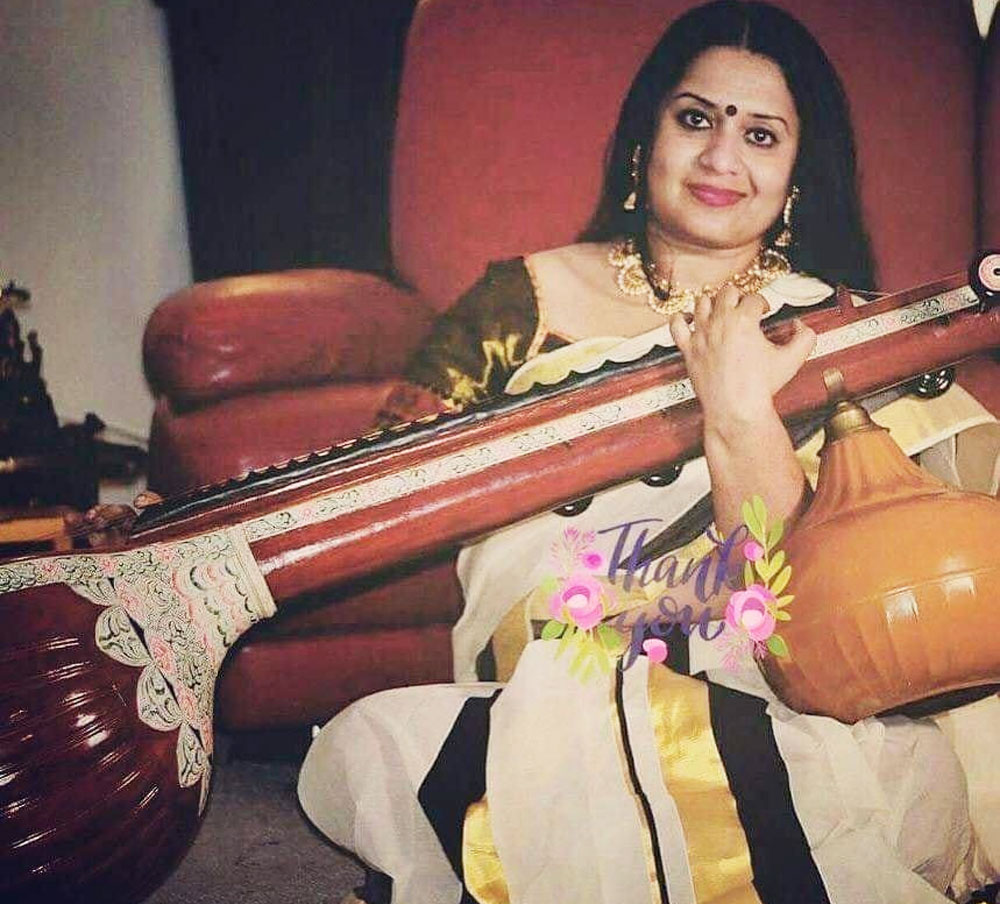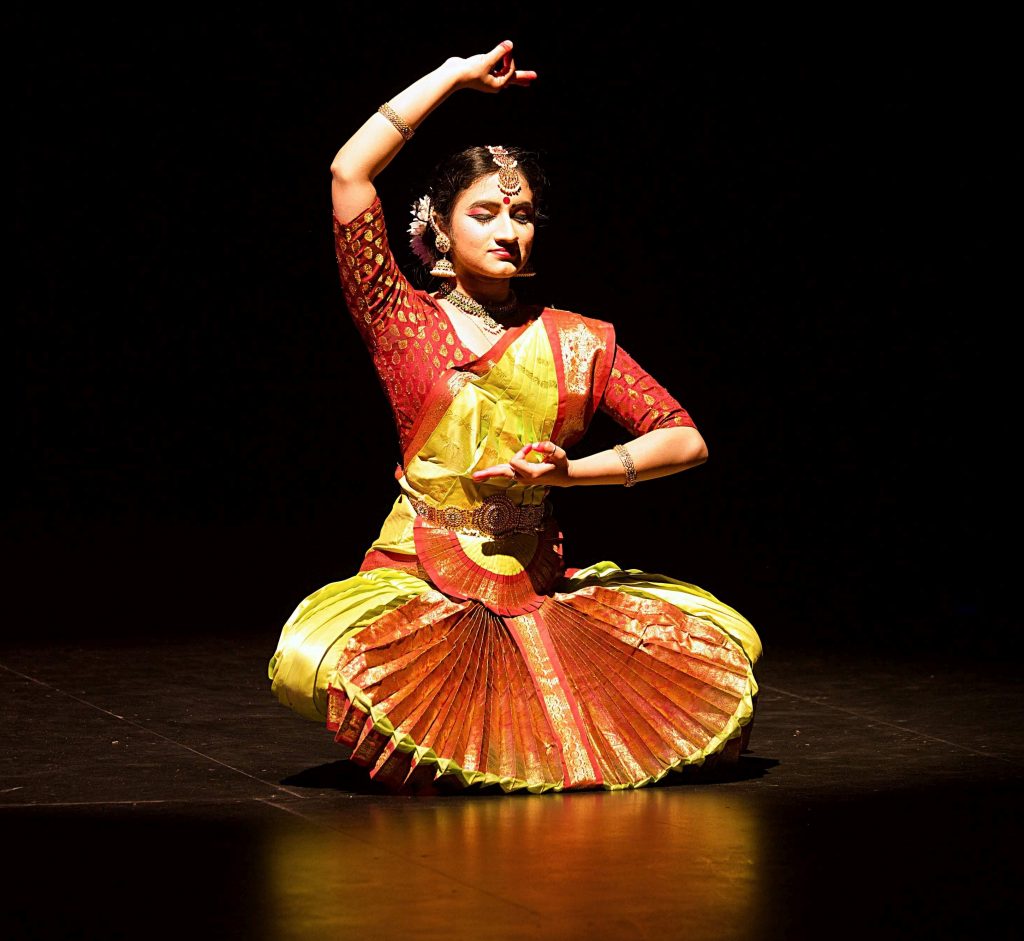Get ready for the Journey!
Learn from the Top Music and Dance School Toronto
Join and Learn the Innovative Courses!
Our Courses for Everybody
We help you with everything you need to grow your skills in South Indian Music and Dance!


Bharathanatyam
Bharata Natyam or Bharatanatyam is a classical dance form originating in Tamil Nadu, nowadays practiced throughout South India by predominantly young females and women. It is held as the national dance of India. The dance is accompanied by the classical Carnatic music. It has its inspirations from the sculptures of the ancient temple of Chidambaram.
Bharata Natyam is considered to be a ‘fire dance’ the mystic manifestation of the metaphysical element of fire in the human body. It is one of the five major styles (one for each element) that include Odissi (element of water), Mohiniattam (element of air), Kuchipudi (element of earth) and Kathakali (element of sky). The movements of an authentic Bharata Natyam dancer resemble the movements of a dancing flame. Contemporary Bharata Natyam is rarely practiced as Natya Yoga (popularly known as ‘Dance Yoga’), a sacred meditational tradition, except by a few orthodox schools.
Bharata Natyam proper is a solo dance, with two aspects, lasya, the graceful feminine lines and movements, and tandava Ananda Thandavam (Tamil) (the dance of Shiva), masculine aspect, which is identical to the Yin and Yang in the Chinese culture.
Mohiniyattam
Mohiniyattam, also spelled Mohiniattam is a traditional South Indian dance from Kerala, developed by the great Tamil nattuvanar (dance master) Vadivelu,one of the Thanjavur Quartet. It is one of the eight Indian classical dance forms. It is considered a very graceful dance meant to be performed as a solo recital by women. The term Mohiniyattam comes from the words “Mohini” meaning a woman who enchants onlookers and “aattam” meaning graceful and sensuous body movements. The word “Mohiniyattam” literally means “dance of the enchantress”. There are two stories of the Lord Vishnu disguised as a Mohini. In one, he appears as Mohini to lure the asuras (demons) away from the amrita (nectar of immortality) obtained during the churning of the palazhi or Ocean of Milk.
In the second story Vishnu appears as Mohini to save Lord Shiva from the demon Bhasmasura. The name Mohiniyattam may have been coined after Lord Vishnu, and the main theme of the dance is love and devotion to God, with usually Vishnu or Krishna being the hero. Devadasis used to perform this in temples. But it also has elements of Koothu and Kottiyattom in it. Mohiniyattam is a drama in dance and verse.
Kuchipudi
Kuchipudi (pronounced as ‘Koochipoodi’) is a Classical Indian dance form from Andhra Pradesh, India. It is also popular all over South India. Kuchipudi is the name of a village in the Divi Taluka of Krishna district that borders the Bay of Bengal and with resident Brahmins practicing this traditional dance form, it acquired the present name.
The performance usually begins with some stage rites, after which each of the character comes on to the stage and introduces him/herself with a daru (a small composition of both song and dance) to introduce the identity, set the mood, of the character in the drama. The drama then begins. The dance is accompanied by song which is typically Carnatic music. The singer is accompanied by mridangam (a classical South Indian percussion instrument), violin, flute and the tambura (a drone instrument with strings which are plucked). Ornaments worn by the artists are generally made of a light weight wood called Boorugu.
Fusion Dance
Fusion Dance is a Mixture of Western and South Asian types of dance that are exemplified in Indian cinema and theater. Bollywood is basically the “Hollywood of Bombay,” now known as Mumbai, and is the largest producer of movies a year in the world right now. I like to think of most Indian movies as a musical with playback singers, where sometimes the music, and dance, are more important and more popular than the movie story line itself- And thus the magic that is Bollywood Dance! Bollywood dance is an eclectic mix of all that is old and new traditional and modern, hip hop and salsa, R&B and trance-which is why it is the right fit for mostly anyone!
Classical Music
Carnatic music, from South India, tends to be significantly more structured than Hindustani music. Examples of this are the logical classification of ragas into melakarthas, and the use of fixed compositions similar to Western classical music. Carnatic raga elaborations are generally much faster in tempo and shorter than their equivalents in Hindustani music. The opening piece is called a varnam, and is a warm-up for the musicians. A devotion and a request for a blessing follows, then a series of interchanges between ragams (unmetered melody) and thaalams (the ornamentation, equivalent to the jor). This is intermixed with hymns called krithis. The pallavi or theme from the raga then follows. Carnatic pieces also have notated lyrical poems that are reproduced as such, possibly with embellishments and treatments according to the performer’s ideology; these pieces are called compositions. Carnatic music is similar to Hindustani music in that it is improvised (see musical improvisation). Primary themes include worship, descriptions of temples, philosophy, and nayaka-nayaki (Sanskrit “hero & heroine”) themes. Tyagaraja (1759 to 1847), Muthuswami Dikshitar (1776 to 1827) and Syama Sastri (1762 to 1827) are known as the Trinity of Carnatic music, while Purandara Dasa (1480 to 1564) is the father of Carnatic music.

